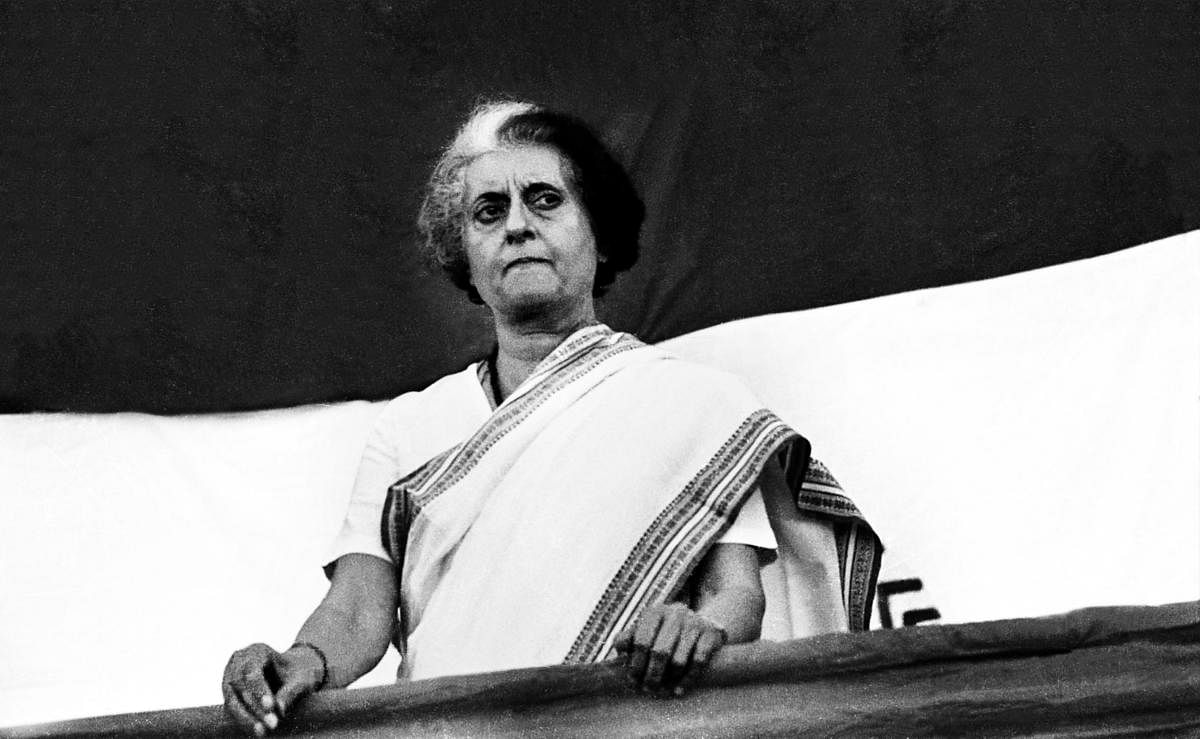June 12, 1975 was a triple whammy for prime minister Indira Gandhi. She woke up to the news that her close adviser Durga Prasad Dhar had passed away. At 10 am, Justice Jagmohan Lal Sinha of the Allahabad High Court ruled against her in the petition which Raj Narain had filed against her, declaring her election null and void. Then came news that in elections to the 182-member Gujarat Assembly, Congress had won only 75 seats. The Janata Morcha coalition won 86 and went on to form the state government.
Most people believe, wrongly, I think, that it was the June 12 verdict of Justice Sinha disqualifying Indira which caused her to impose the Emergency to save herself. But while the Allahabad High Court judgement might have been the straw that broke the camel’s back, it was not the major reason why she declared the Emergency. It is quite possible that she would have imposed the Emergency even if she had not been disqualified. In the weeks before the verdict, Indira had repeatedly stated that the nation needed “shock treatment.”
According to B N Tandon, who was a joint secretary in the Prime Minister’s Secretariat (now called PMO), Indira had been rattled by the thorough cross-examination conducted on her by Shanti Bhushan, Raj Narain’s lawyer, who was also treasurer of the Congress (O) party. Siddhartha Shankar Ray, then chief minister of Bengal, and law minister HR Gokhale proposed that Bhushan could be enticed away from the litigation by offering him the position of a supreme court judge. But PN Haksar, Indira’s closest aide, thundered that this would be most improper.
On June 7, P P Nair, an additional secretary dealing with legal matters, told the chief justice of the Allahabad high court D S Mathur that the announcement of the verdict should be delayed until after July. While passing on this instruction, Justice Mathur also hinted to Justice Sinha that he could be made chief justice of Himachal Pradesh, with a clear path to being elevated to the Supreme Court. A furious Justice Sinha immediately told the registrar of the high court to notify that he would pronounce the verdict on the next working day, that is, June 12.
There is some evidence that Indira knew in advance that the verdict would go against her. She told Ray to rush to Delhi on June 10 itself. My father, HY Sharada Prasad, who was information advisor to the prime minister, had told the correspondent of the Press Trust of India to call him as soon as Justice Sinha delivered his verdict.
My father and principal secretary PN Dhar went across to Indira to inform her that she had been disqualified as a member of parliament. She heard the news calmly and without showing any emotion, turned to Ray and remarked: “You probably knew this, didn’t you?”
Former president Pranab Mukherjee asserted recently that the Emergency could have been avoided. He is right in that it was only the massive egos of Jaya Prakash Narayan (JP) and Indira Gandhi and Morarji Desai that prevented them from ratifying agreements which their interlocutors had painstakingly hammered out over months.
Indira’s negotiators were PN Dhar and my father Sharada Prasad; JP’s interlocutor was my maternal uncle, KS Radhakrishna, who was head of the Gandhi Peace Foundation. Many of the negotiations took place at our home.
It is quite possible that Indira might have imposed the Emergency even if the Allahabad high court had ruled in her favour, because of three factors: the Nav Nirman movement in Gujarat, the railwaymen’s strike led by George Fernandes, and the Bihar students’ agitation.
According to my father, the cardinal mistake that JP made was to involve the RSS in the Bihar students’ agitation, which was being led by Lalu Prasad and Sushil Kumar Modi. Subramanian Swamy got JP and Jan Sangh’s Nanaji Deshmukh to take charge of the Bihar students’ agitation. Swamy convened a meeting at the residence of Murli Manohar Joshi, to which he invited JP, Nanaji, KN Govindacharya and Kailashpati Mishra. It was decided that the Bihar student leaders — Lalu, Sushil Modi, Ram Vilas Paswan, Sharad Yadav, Ravi Shankar Prasad, etc — would cede the leadership of their agitation to JP and Nanaji.
Indira had a visceral hatred of the RSS. Once JP got the RSS involved, with Nanaji as his deputy, there was no question of Indira agreeing to any rapprochement with JP. In fact, Ray, Gokhale, Bansi Lal and Rajni Patel had been planning the arrests of political opponents, especially those belonging to the RSS and its student wing ABVP, since January 1975. There is a hand-written letter dated January 8, 1975, from Ray to Indira, in which he advised her in detail on imposing an internal emergency, together with legal justifications for doing so, and invoking constitutional provisions.
Moreover, in January 1975 itself, the ‘Motherland’, the daily newspaper published by the Jan Sangh party, published a detailed front-page article written by a Jan Sangh member of parliament, Vasanth Kumar Pandit, in which he gave details of Indira’s plans to arrest opposition leaders and muzzle the press. Pandit even mentioned the names of the hundreds of politicians and journalists who would be arrested. The Intelligence Bureau questioned Pandit, but he managed to convince the IB that he was an astrologer and his article was a mere astrological prediction, not based on any confidential information.
The lists of those arrested on June 26, 1975, showed that Pandit had got every single name correct, six months in advance. In fact, the ‘Motherland’, edited by KR Malkani, was the only newspaper to print the news of the arrests nationwide in its issue on June 26 because, inexplicably, while Sanjay Gandhi’s henchmen had cut off power to newspapers located on Bahadur Shah Zafar Marg, they forgot to cut off electricity to the ‘Motherland’, or to arrest its journalists.
